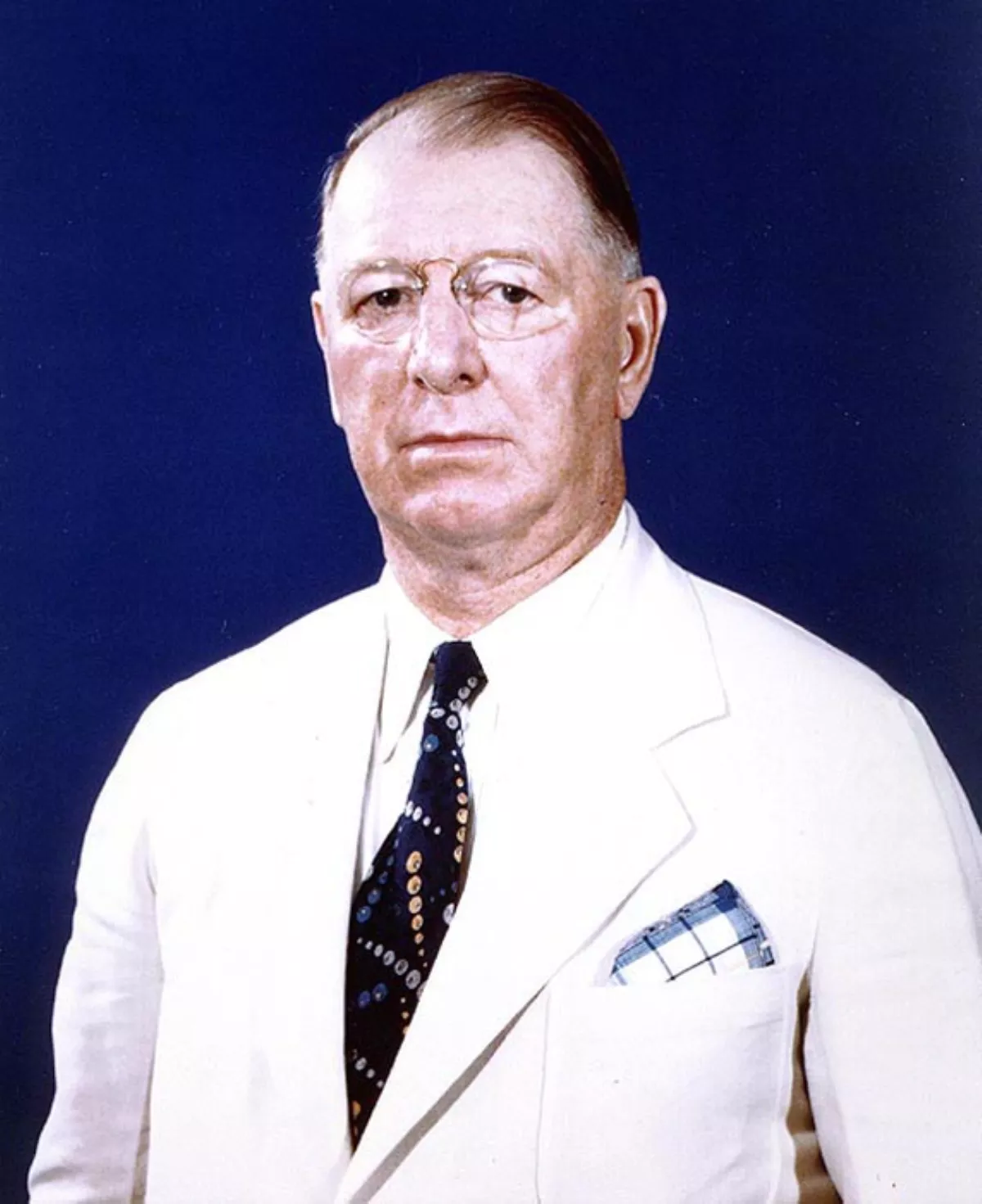 1.
1. William Franklin Knox was an American politician, soldier, newspaper editor, and publisher.

Frank Knox was the Republican vice presidential candidate in 1936 and Secretary of the Navy under Franklin D Roosevelt during most of World War II.
Frank Knox was a leading supporter of Theodore Roosevelt, the Progressive candidate for president in 1912.
Frank Knox advocated US entrance into World War I and served as an artillery officer in France.
Frank Knox served as secretary of the Navy until his death in 1944, when Forrestal replaced him.
Frank Knox's parents were both Canadian; his mother, Sarah C, was from Charlottetown, Prince Edward Island, and his father, William Edwin Knox, was from New Brunswick.
Frank Knox attended Alma College in Michigan, where he was a member of the Zeta Sigma fraternity.
Frank Knox later supplemented his studies with additional readings and coursework, and the college's board of trustees awarded him a Bachelor of Arts degree as a member of the class of 1898.
Frank Knox served in Cuba with Theodore Roosevelt's famous Rough Riders, the First Volunteer Cavalry Regiment.
Frank Knox was a member of Troop D commanded by Captain Robert Huston.
Frank Knox changed his first name to Frank around 1900.
Frank Knox was state chairman of the Michigan Republican Party.
In late 1912, Frank Knox helped found the Manchester Leader in New Hampshire.
The newspaper was so successful that Frank Knox bought out the Manchester Union.
Frank Knox reached the rank of Colonel and served as an artillery officer in France.
In 1931, Frank Knox became publisher and part owner of the Chicago Daily News.
Frank Knox carried out Roosevelt's plan to expand the US Navy into a force capable of fighting in both the Atlantic and the Pacific oceans.
Frank Knox was mentioned by name in Adolf Hitler's speech of December 11,1941, in which Hitler stated a German declaration of war against the United States.
Frank Knox supported the continued racial segregation in the United States Armed Forces.
Frank Knox had called for the internment of Japanese Americans as early as 1933, and he continued to do so in his new position.
Frank Knox was buried on May 1,1944, at Arlington National Cemetery, in Arlington, Virginia.
Frank Knox received the Spanish Campaign Medal and the World War I Victory Medal for his previous military service.